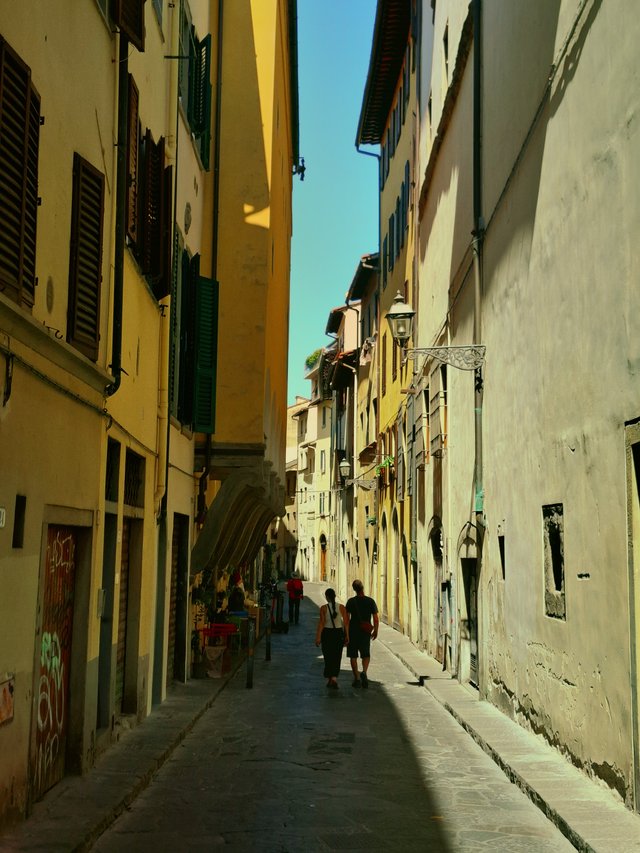📷Firenze
The Fall of Corso Donati and the Tumultuous Fate of Florence
The Death of Corso Donati (1308)
This miserable chapter of Florentine history ended tragically in 1308, with the death of Corso Donati.
In his old age, Corso had married a daughter of Florence's deadliest foe, the great Ghibelline champion Uguccione della Faggiuola. In secret understanding with Uguccione and Cardinal Napoleone degli Orsini—at a time when Pope Clement V had already transferred the papal chair to Avignon, beginning the Babylonian Captivity—Corso plotted to overthrow the Signoria, abolish the Ordinances, and make himself Lord of Florence.
But the people anticipated him.
On Sunday morning, October 16th, the Priors ordered their great bell to be sounded. Corso was accused, condemned as a traitor and rebel, and sentenced in less than an hour. With the great Gonfalon of the People displayed, the forces of the Commune, supported by the swordsmen of the Della Tosa and Catalan mercenaries in the service of the King of Naples, marched upon the Piazza di San Piero Maggiore.
“His life was perilous,” says Dino Compagni, “and his death was blame-worthy.”
Corso, too ill with gout to bear arms, encouraged his followers by fiery words, but no allies came. Forced to flee, he was overtaken near the Badia di San Salvi, captured, and slain by mercenary lances—at the whispered instigation of Rosso della Tosa and Pazzino dei Pazzi. The monks buried him humbly in the Abbey, fearing the people.
Though guilty of many crimes, there was nothing small in anything Messer Corso did. He was a great spirit, one who might have achieved mighty things in another age—one who could not breathe freely in the atmosphere of a mercantile republic.
The Advent of the Emperor Henry VII (1310–1313)
A brief but glorious chapter follows—though condemned in Dante’s bitterest words.
Hardly was Corso dead when the imperial trumpets again echoed through Italy.
Henry of Luxemburg, the last hero of the Middle Ages, elected Emperor as Henry VII, crossed the Alps in September 1310, resolved to heal Italy’s wounds and revive the dream of the Holy Roman Empire.
In three wild and terrible letters, Dante hailed him as a “peaceful king”, a “new Moses”, urging him against Florence—
“the sick sheep that infecteth all the flock of the Lord.”
Yet Florence rose to the occasion. With the aid of her ally, the King of Naples, she formed what was practically an Italian confederation to oppose the imperial invader.
“At this moment,” writes Professor Villari,
“the small merchant republic initiated a truly national policy and became a great power in Italy.”
From September to October 1312, the imperial army encircled Florence. Henry, fevered, camped at San Salvi, but dared not attack. The next August, the Signoria joyfully announced that the “most savage tyrant, Henry, late Count of Luxemburg” had died at Buonconvento.
In Heaven, however, Beatrice shows Dante the throne of glory prepared for the noble-hearted Caesar:
“In quel gran seggio, a che tu gli occhi tieni
per la corona che già v’è su posta,
prima che tu a queste nozze ceni,
siederà l’alma, che fia giù agosta,
dell’alto Enrico, ch’a drizzare Italia
verrà in prima che ella sia disposta.”—Paradiso XXX, 133–138
After Dante: Decline, Reform, and Tyranny
After Henry’s death, darker days fell upon Florence.
Dante, condemned to death in absentia, completed his Divina Commedia in Verona and Ravenna, dying in 1321.
Petrarch, studying law at Montpellier and Bologna, saw Laura in Avignon in 1327, and Boccaccio was growing up in Florence amid chaos.
The city, oppressed by foreign rulers and corrupt marshals, longed for peace. When both Castruccio Interminelli and Charles of Calabria died in 1328, Florence regained her liberty. A new constitution followed:
- Priors and Gonfaloniere chosen by lot and scrutiny
- Two chief councils:
- Council of the People (300 popolani)
- Council of the Commune (250 members, presided by the Podestà)
The Rise and Fall of the Duke of Athens (1342–1343)
Discontent and war mismanagement led to the rise of Walter de Brienne, Duke of Athens—a French adventurer linked to the Neapolitan kings.
Appointed Lord of Florence for life on September 8th, 1342, he ruled with cruelty, hypocrisy, and decadence.
By July 26th, 1343, the people rose in revolt. His soldiers were torn to pieces by the mob; he was besieged in the Palazzo Vecchio and forced to abdicate.
“Even as the Duke took away Florence’s liberty on the day of Our Lady in September,”
wrote Giovanni Villani,
“so God permitted that free citizens should win it back on the day of her mother, St. Anne.”
Henceforth, St. Anne became Florence’s celestial patroness, celebrated annually with solemn offerings and processions.
Civil Strife: Magnates vs. the People (1343)
Only two months later, civil war broke out again.
The magnates fortified their towers—the Adimari, Pazzi, Donati, and Cavalcanti—while the people, led by the Medici and Rondinelli, fought under the gonfalon.
After fierce street battles, the grandi were overthrown.
Their towers burned, their houses sacked.
The long struggle between nobles and commoners ended—
but virtue and valor perished with them.
“This was the cause,” wrote Machiavelli,
“that Florence was stripped not only of all martial skill, but also of all generosity.”
Dante’s Bitter Prophecy
Dante had foreseen it all a quarter century before:
“Athens and Sparta, who made ancient laws,
and were so civilised,
made but a little sign towards living well
compared with thee, who makest such fine-spun laws,
that what thou spinnest in October
lasts not to mid-November...”—Purgatorio VI (tr. Longfellow)
The Black Death (1348)
Then came the terrible pestilence, the Black Death of 1348.
In five months, three-fifths of Florence’s population perished.
Civic life vanished; the city of art became the valley of death.
Giovanni Villani died among the victims.
Petrarch’s Laura perished at Avignon.
And Boccaccio, escaping to the villas of Settignano and Fiesole, wrote the haunting introduction to the Decameron—a portrait of youth, laughter, and sin in the shadow of the plague.
“The gayest and most beautiful of cities seemed for a while transformed
into the dim valley of disease and sin that lies outstretched
at the bottom of Dante’s Malebolge.”
Florence had survived tyranny, corruption, and pestilence—but her spirit, like Dante’s vision, burned ever bright: defiant, tragic, and immortal.
| Category | #italy |
| Photo taken at | Florence - Italy |
)


Upvoted! Thank you for supporting witness @jswit.
Thank you for sharing on steem! I'm witness fuli, and I've given you a free upvote. If you'd like to support me, please consider voting at https://steemitwallet.com/~witnesses 🌟
curated by: @dexsyluz
Thanks for stopping by :) I really appreciate the support :) Cheers :)